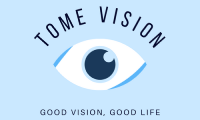How UV Rays Affect Our Eyes and How Sunglasses Can Help
Exposure to ultraviolet (UV) radiation can have severe consequences for our eyes. Prolonged exposure to these harmful rays can lead to various eye conditions and increase the risk of vision impairment. However, wearing sunglasses can offer significant protection against UV rays. In this article, we will explore how UV rays affect our eyes and how sunglasses can help mitigate these effects.
1. The impact of UV rays on our eyes
UV rays, part of the invisible electromagnetic spectrum emitted by the sun, consist of UVA, UVB, and UVC rays. UVC rays are mostly absorbed by the Earth’s atmosphere and do not reach our eyes. However, both UVA and UVB rays can have damaging effects on our vision.
– UVA rays: UVA rays account for 95% of the UV radiation that reaches the Earth’s surface. Although they are less intense, UVA rays can penetrate deep into the eye and reach the retina. Prolonged exposure to UVA rays is linked to various eye conditions, including cataracts, macular degeneration, and certain types of eye cancers.
– UVB rays: UVB rays are more intense than UVA rays, but most of them are absorbed by the Earth’s ozone layer. However, during peak sun hours and at high altitudes, UVB rays can cause harm to our eyes. Exposure to UVB rays can lead to conditions such as photokeratitis (sunburn of the cornea), pterygium, and snow blindness.
2. How sunglasses can help protect our eyes
Wearing sunglasses that offer proper UV protection can play a crucial role in shielding our eyes from the harmful effects of UV radiation. Here are some ways sunglasses can help protect our eyes:
– UV radiation blockage: Sunglasses with UV protection block a significant amount of both UVA and UVB rays. When choosing sunglasses, opt for ones that provide 100% UVA and UVB protection or have a label indicating they meet the American National Standards Institute (ANSI) guidelines for UV protection.
– Reducing the risk of eye conditions: By blocking UV radiation, sunglasses can help decrease the risk of developing eye disorders associated with UV exposure. These include cataracts, macular degeneration, pterygium, and certain types of eye cancers. The use of sunglasses should be particularly emphasized for individuals with light-colored eyes, as they have increased susceptibility to UV damage.
– Minimizing glare and discomfort: Sunglasses with polarized lenses can significantly reduce glare caused by sunlight reflecting off surfaces such as water, snow, and pavements. This helps improve comfort and visual clarity while protecting our eyes from harmful UV rays. Polarized sunglasses are particularly beneficial for outdoor activities like driving, sports, and water-related activities.
– Preventing photokeratitis: Photokeratitis, also known as “sunburn of the cornea,” can occur when the eyes are exposed to intense UVB rays without proper protection. Symptoms include eye irritation, redness, tearing, and a sensation of a foreign object in the eye. Wearing sunglasses during peak sun hours and when engaging in outdoor activities can help prevent photokeratitis.
In conclusion, the impact of UV rays on our eyes should not be underestimated. Prolonged exposure to UVA and UVB rays can lead to various eye conditions and increase the risk of vision impairment. Wearing sunglasses that offer adequate UV protection is essential to shield our eyes from harmful radiation. By blocking UV rays, sunglasses reduce the risk of eye conditions, minimize glare and discomfort, and help prevent photokeratitis. Remember to choose sunglasses with proper UV protection and wear them consistently, especially during sunny days and outdoor activities. Protecting our eyes by wearing sunglasses is a small yet impactful step toward maintaining long-term eye health.
